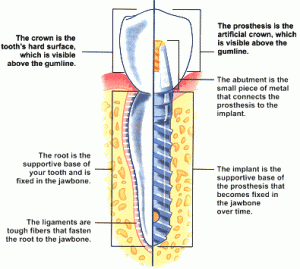Enamel is the hardest tissue produced in the bodies of people and other vertebrates, including fish. But until now, scientists were unclear about whether enamel originated in teeth or evolved from a tissue resembling enamel called ganoine. Researchers at Uppsala University in Sweden noted that certain fish such as sharks have enamel on their teeth and dermal denticles, or little tooth-like scales, on the outer surfaces of their bodies.When they examined prehistoric fish fossils they found an enamel coating on their scales, but no enamel on their teeth. Only millions of years later through evolutionary processes did fish exploit the enamel to make teeth harder and stronger. “This is important because it is unexpected. In us, enamel is only found on teeth, and it is very important for their function, so it is natural to assume that it evolved there,” said palaeontologist Professor Per Erik Ahlberg of Sweden’s University of Uppsala.
To read more about this surprising finding published in the journal Nature click here.
 sing teeth. The supporting teeth are called abutments and they serve as anchors for the bridge. The abutments need to be filed down in order to have a the bridge fit over them. This is one of the major drawbacks of the bridge since the reduction weakens the supporting teeth. The replacement tooth is called a pontic and it is attached to the abutments as part of the bridge. As with
sing teeth. The supporting teeth are called abutments and they serve as anchors for the bridge. The abutments need to be filed down in order to have a the bridge fit over them. This is one of the major drawbacks of the bridge since the reduction weakens the supporting teeth. The replacement tooth is called a pontic and it is attached to the abutments as part of the bridge. As with  ee in the mouth, such as a crown, a fixed bridge or a full set of dentures are added to the implant. These implants are made of Titanium or similar materials that biocompatible. After an initial healing period, during which the implant is buried in bone and left undisturbed under gum tissue, it is uncovered and the process of making the artificial teeth commences. For single missing teeth a crown is attached.
ee in the mouth, such as a crown, a fixed bridge or a full set of dentures are added to the implant. These implants are made of Titanium or similar materials that biocompatible. After an initial healing period, during which the implant is buried in bone and left undisturbed under gum tissue, it is uncovered and the process of making the artificial teeth commences. For single missing teeth a crown is attached.